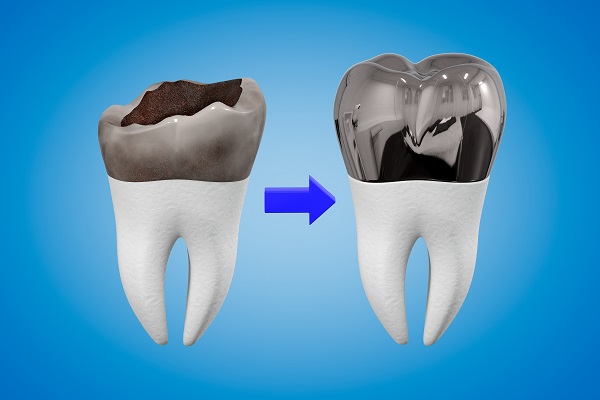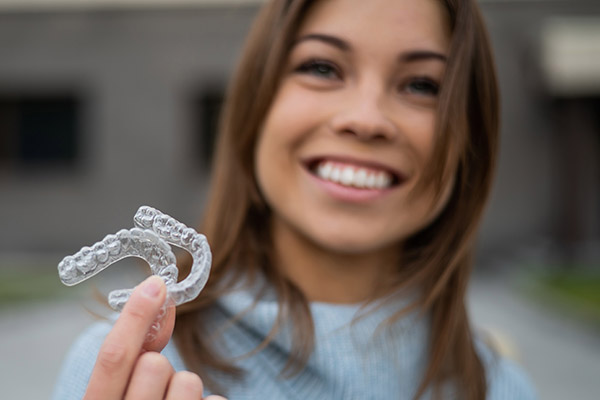When a Stainless Steel Crown Is Recommended for a Baby Tooth

Baby teeth are more important than many people realize, which is why doctors may recommend a stainless steel crowns when a tooth has decay. These teeth do fall out, but before that happens, primary or baby teeth serve many functions. Baby teeth help in biting and chewing food and in proper speech development. Most children begin to have teeth erupt around six months of age. By the time children are toddlers, all the primary teeth are present.
Tooth decay in children
There are many reasons why cavities and tooth decay form in primary teeth. Caregivers must teach children oral hygiene. It takes a lot of practice to establish habits. Many caregivers do not know how to brush and clean their child’s teeth or assume it is not important until the child is much older. Caregivers often mention to their dentists that the primary teeth do not seem to be important because they will fall out, and adult teeth will replace them.
The same types of foods and drinks that cause tooth decay in adults cause tooth decay in children as well. Foods with sugars and carbohydrates that remain on the teeth promote bacterial growth. It is not uncommon for caregivers to put babies and toddlers to bed with a bottle of milk or juice. Candies, cereal, and soda also can cause tooth damage, especially when coupled with poor brushing habits.
Why dentists use stainless steel crowns
The enamel on primary teeth is much thinner than on permanent adult teeth. When a cavity develops on the primary tooth, it can damage the enamel. If the dentist does not get to the cavity in time, the decay can damage the tooth so much that a filling will no longer work. This is when a doctor may decide to place a stainless steel crown on the tooth.
Stainless steel crowns can be confusing for some caregivers because they think of them as temporary crowns. Because primary teeth can decay so fast, placing a filling can be ineffective. Placing a stainless steel crown has been the standard of care for many years. The dentist cements the crown in place. The crown can withstand the grinding and chewing pressure during eating.
It is great for very young children. Kids may struggle with fears of the dentist’s office. A dentist can place a stainless steel crown quickly, as it is usually preformed and then cemented over the tooth. For children under the age of four, a stainless steel crown is more likely to last than a filling. This can reduce the number of visits to the dentist.
Stainless steel crowns are most often used on premolars. Sometimes, a dentist will place a crown on a tooth next to a space. The crown can also serve as an aid to a spacer. This allows space for an emerging adult tooth.
An important dental aid
Stainless steel crowns preserve primary teeth so children can eat and develop without more difficulty. Crowns prevent tooth decay from spreading to nearby teeth. Dentists like using stainless steel crowns because of their durability, even with extreme wear. Stainless steel crowns can even help dentists hold space for emerging teeth, which promotes good tooth alignment.
Request an appointment here: https://www.orthodonticprecision.com or call Precision Orthodontics & Pediatric Dentistry at (703) 391-8800 for an appointment in our Reston office.
Check out what others are saying about our services on Yelp: Read our Yelp reviews.
Recent Posts
Metal braces have been used to straighten teeth for over a century and remain an efficient way to straighten teeth. These oral appliances work by applying constant pressure on your teeth, slowly improving their alignment over 12 to 36 months. The appliance is fixed in your mouth after a dentist installs it, and it stays…
Like braces, clear aligner treatment can successfully straighten teeth and correct bite problems. Braces were the most popular and available choice for many years, but aligners are more common today than ever. If you are unhappy with the way your smile looks, aligners can be effective. Understanding how aligners work and what the process is…
As you prepare to get braces and start wearing them, you may be a little nervous. It can take some time to get used to this treatment. You will encounter some challenges, but the result can help you achieve your goals. During the process, you need to be diligent about caring for your braces. This…
A kids dental specialist is a type of dentist who focuses on seeing children and helping them with the needs unique to their developing dentition. Parents may wonder whether seeing a dentist specializing in kids is essential or if they can just see the same dentist the adults in the family trust.While a general dentist…


